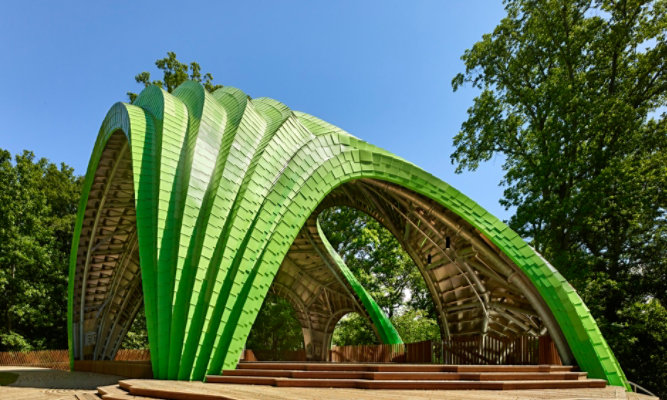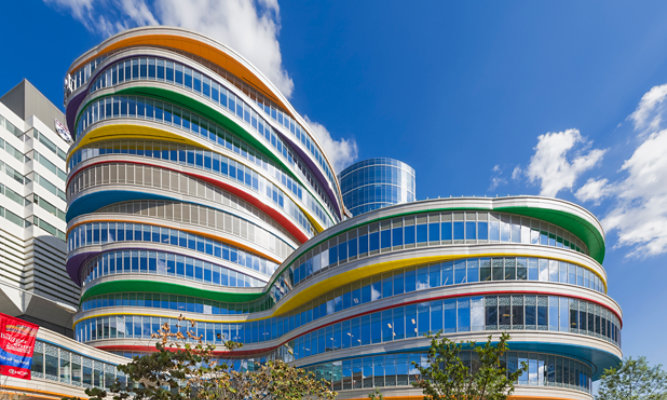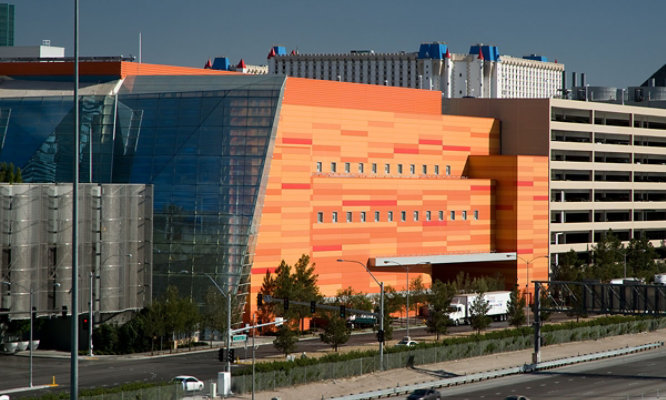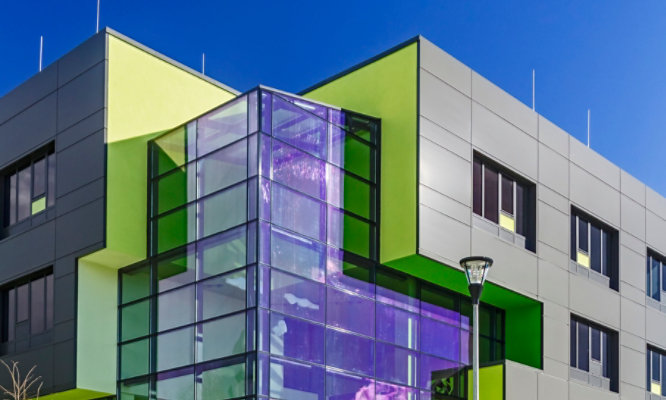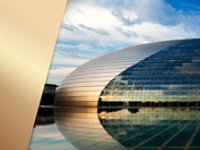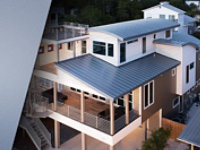Designers Seek Architectural Color That Combines Form and Function
Color, form, space, and light are principal components of an architectural project, but color is the one element that most affects the others. Selecting the right color for a building project can be a daunting task. Color has a profound effect on the human experience and, in particular, on users of the built environment, where we live, work and play. It also plays a dramatic role in changing and improving the aesthetic appeal of particular areas.
Just as color is consistently a key selling feature for building components, whites, beiges, bronzes, metallics and grays have remained the leading color choices for many years. One of the things designers and building owners seek is a building that does not appear dated years down the road. As a result, color choices tend to be more conservative. Yet, definitive color trends are taking place as consumers and the design industry increasingly desire to express creativity. This is accomplished by re-evaluating the power of architectural color, looking to more color trends and bringing bolder color choices to their projects.
This poses a unique opportunity for high-performance architectural coatings, as some bright, eye-catching colors can be difficult to achieve, and selecting the wrong color can mean failure.
In today’s world of ever-increasing expectations, the coating manufacturer faces a tough challenge of pleasing the customer and providing a quality product that will last. One key ingredient can make or break a coating and that is pigments, it provides the coatings color. The pigment component in any formulation can either enhance or degrade the overall performance of the protective color coating. In architectural building components, the chemical resistance of the pigment is crucial. This sometimes restricts color spaces that can be achieved, no matter how well a coating is made, certain colors are more affected by the outside environment than others, for example bright colors; yellows, oranges and reds.
Pigments: Inorganic vs. Organic
A pigment changes the color of reflected or transmitted light as a result of wavelength-selective absorption. Their role must be for both coloration and function. Pigments are either inorganic or organic in composition. Sometimes both types must be used to achieve a certain shade or color.
Inorganic pigments are manufactured from mineral compounds that are mainly complex metal oxides and have superior color stability, heat, and chemical resistance. Colors coming from inorganic pigment are less bright such as beiges, browns, tans and other earth tones.
Organic pigments are carbon based and are often made from petroleum compounds, but they have a low resistance to fade and low heat resistance. They allow UV and oxygen to penetrate, breaking the chemical bonds, and have less hiding power. Colors from organic pigments have very bright, vivid appearance. These are sometimes known as cleaner or purer colors.
The following table gives a comparison between Inorganic and Organic pigments.
 Every day Sherwin-Williams color technicians are challenged to select affordable pigments for coatings required for durable applications. Their choices are restricted due to environmental and performance concerns. When these offerings are required it limits color space and warranty options; especially if a high warranty is required. In general paint manufacturers will blend inorganic pigments with premium resins (PVDF), and organic pigments with less-expensive resins (polyesters).
Every day Sherwin-Williams color technicians are challenged to select affordable pigments for coatings required for durable applications. Their choices are restricted due to environmental and performance concerns. When these offerings are required it limits color space and warranty options; especially if a high warranty is required. In general paint manufacturers will blend inorganic pigments with premium resins (PVDF), and organic pigments with less-expensive resins (polyesters).
Warranty: How color affects warranty?
To begin with, each architectural project must be analyzed in terms of its own particular situation, function and need. With each project, one needs to ask:
- What is the end-use application?
- What is the application’s environment? For example, percentage of direct sunlight.
- What are the performance requirements?
Answering these questions will help determine the coating’s formulation and warranty that can be provided. Not all pigments are suitable for every application. Pigments for exterior, high-performance architectural coatings require high-end products with outstanding properties-especially heat resistance. Color warranties are based on the percentage of organic vs. inorganic pigments used to create the final color.
The Sherwin-Williams standard warranty looks at film integrity, chalk, and fade of a coating. Film integrity is determined by the resin system used; PVDF, SMP or Polyester. Chalk and fade is caused by the breakdown of the pigments. Chalk, the appearance of a white powder, is the result of a breakdown of carbon bonds by ultraviolet (UV) light. The pigment should be a UV absorber or reflector. Fade is caused by a breakdown of the pigment itself, measured in Delta E (DE) variations.

It’s clear in this example that pigment selection was the deciding factor in the warranty consideration of the coating. Additionally, we take end use into consideration. This example called for maximum exposure.
What about adding a clear coat? A clear coat can indeed improve some of the borderline bright colors and is critical for metallic colors using aluminum pigmentation. For a metallic color, if the color exceeds a certain level of aluminum pigment, the color requires the use of a clear coat. This top coat keeps the aluminum from discoloring when exposed to certain chemicals in the environment. Similar results can help bright colors, while the color fade and chalk resistance of some organic pigments can be improved by using a clear coat. Within a warranty, the color fade (5.0 DE) typically does not jump from five years to standard twenty years, though a move from five to ten years is not unheard of. This is decided on a case-by-case basis.
No matter what color you are trying to achieve, Sherwin-Williams has a strong tradition of innovation in the development of color, as well as dedicated resources to assist our clients in making the right selection. Protection of the architect’s vision matters above all. Sherwin-Williams coatings will make sure your vision ages beautifully.
